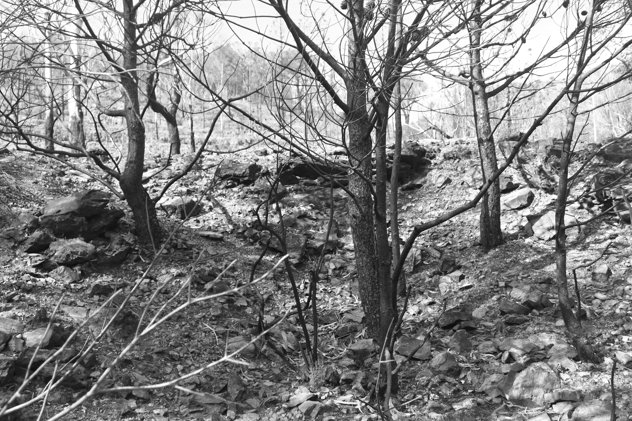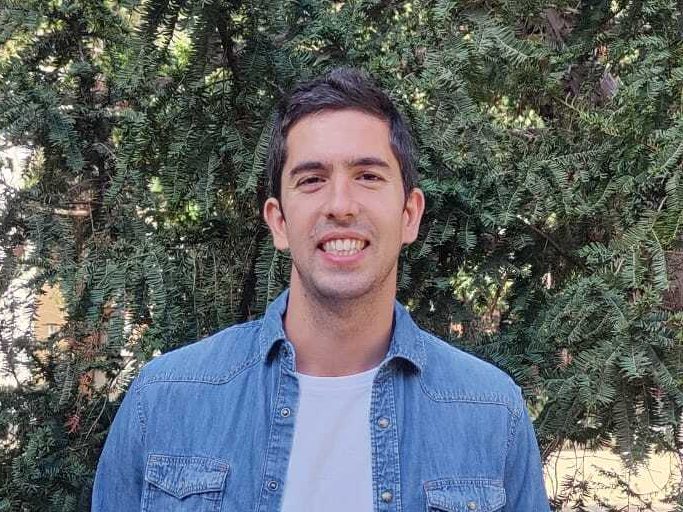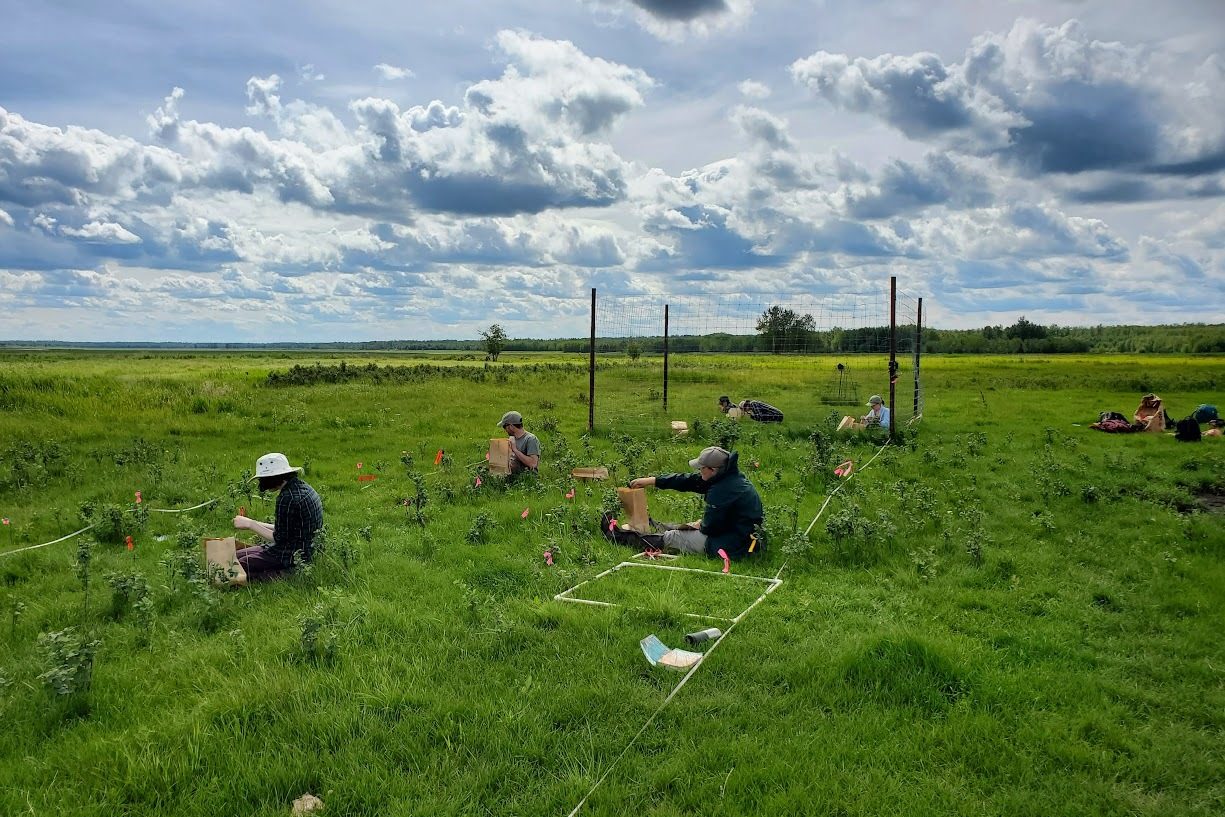Gerard Codina and the experience of fire to protect forests
Relentless. The forest fires that ravaged Canada in the summer of 2023 consumed forests, homes, and infrastructure, scorching more land than the sum of the previous 7 years combined. A state of emergency in full swing, experienced firsthand by the pre-doctoral researcher at CREAF, Gerard Codina, who was closely involved while in Montreal for a scientific exchange. "There came a point when the smoke from the fires blanketed the city for several weeks. All my Canadian colleagues emphasized the gravity of the situation experienced that summer and how these fires were an unprecedented phenomenon in the country." Here on the Iberian Peninsula, the reality of our forests is also concerning. "Some forest communities that have burned in recent years are not recovering." Gerard Codina's striking assertion highlights this. What are the underlying causes behind this worrying trend? One might say this is the vibrant daily reality of someone who, just as his doctoral thesis at CREAF had barely begun, was awarded the 'Beca Impulsa Barraquer' to further catalyze his research. "As someone who's just starting in research, it's very exciting and motivating that the project I'm working on is of interest. Especially at a time when there are so many limitations on dedicating oneself to it," he confesses with a shy yet captivating smile.
His thesis, linked to the RESIBIO project, is being worked on hand in hand with Enric Batllori, a researcher at UB, and Francisco Lloret, a researcher at CREAF and professor at UAB. Its main objective is to understand the influence of climate on the resilience of plant species and to identify the critical point at which the recovery capacity of Mediterranean forests reaches a point of no return when subjected to a major disturbance such as a fire. And he gives us a 'spoiler': in most cases, it has a brutal impact.

From Grandma's Garden to Research
Plants, insects, gardening. His passion for nature stems from his childhood spent many hours at his grandmother's house, a gardening enthusiast. "Every afternoon, after school, I spent time playing in the garden, helping her care for the plants, exploring, searching for insects, and learning from her." A lineage that seemingly led him to study Environmental Sciences at UAB and later pursue a master's degree in biodiversity at UB with a specialization in conservation biology. There, he delved deeper into ecology and chose to focus his master's thesis on climate and forest ecology in high mountain forests. He was mentored by Enric Batllori when he was a researcher at CREAF, which is how he became acquainted with the center.
Before embarking on his journey at CREAF, Gerard was involved in conservation and management, but he admits that the path of research had always been a latent desire, one he didn't want to dismiss. When the opportunity for a doctoral program arose, he didn't hesitate.

"I never ruled out the possibility of doing research, and when the door opened for me, I embraced it with great enthusiasm".
GERARD CODINA, pre-doctoral researcher at CREAF.
In addition to his role as a researcher, he also devotes his time to participating in wildlife monitoring projects, such as the ICO swift project, dragonfly population studies as indicators of the ecological status of certain natural environments, and river turtle population monitoring.
Deciphering forest resilience in the face of fires
How is forest resilience studied? There are different ways to measure resilience, and it's currently a hot topic of study due to its necessity in the current climate crisis context. In the case of fires, which is our focus here, Gerard defines it as the ability of a plant community to return to its original state after disturbance. Specifically, resilience helps us decipher the influence of climate on this impact across different plant communities and various climatic situations.
To achieve this, the team led by Gerard Codina utilizes information available in the National Forest Inventories, which provide chronological data from various forest plots distributed throughout Spain. With this data, they can observe how these forests were in the past, how they were affected by fire, and what their current state is. Using this information, Gerard calculates the resilience of these forests and correlates it with different environmental variables of each location, such as climate before and after the fire, soil characteristics, among others.

In the Mediterranean region, fires are part of the ecological dynamics of the ecosystem itself. Gerard admits that in many cases, they are crucial for its proper functioning. In fact, they promote successions of many forest communities that are also natural to this region. For example, in pine forests after a fire, species such as oaks and holm oaks may thrive. However, we must be aware that with climate change, there are alterations in the behavior of these fires.
Fires can increase in severity and frequency, and that's what we're seeing. The resilience of Mediterranean forests, which are initially adapted to fires, may be insufficient.
"They can increase in severity and frequency, and that's what we're seeing. The resilience of Mediterranean forests, which are initially adapted to fires, may be insufficient. Also, the interaction between various disturbances, such as drought, poses challenges. These forests not only have to face one disturbance but two, which are moreover very intense," he asserts.
Crossing Borders and Traveling to Canada
Unbeknownst to him, his words reveal an insatiable thirst for knowledge and a desire to extend his research beyond Mediterranean borders, palpable in every expression. We see this when he recounts his experience in Canada. He traveled there last summer and was able to establish valuable collaboration with the forest services and the local team of experts at the University of Montreal. There, forests and climate are vastly different, yet the issues are shared. They worked diligently to develop new approaches to understand how forests and various types of vegetation respond to fire, which can be of great interest in forest management. As Gerard highlights, it's a mutually beneficial exchange, allowing for the learning of new methodologies and ways of working that enrich both institutions.
His assessment couldn't be more encouraging: "The tools generated will be of great relevance, especially in the realm of management, as they anticipate the impacts of climate change on forests, implementing strategies to contribute to conserving these ecosystems and preventing their loss and degradation."
Coincidental or not, this experience in Canada culminated in an even more immersive manner, as he witnessed firsthand the devastating effects of last summer's forest fires.
When discussing the future with Gerard, although he hesitates to speculate, he thinks big and fearlessly. But always with a common denominator: working to conserve and protect nature.







